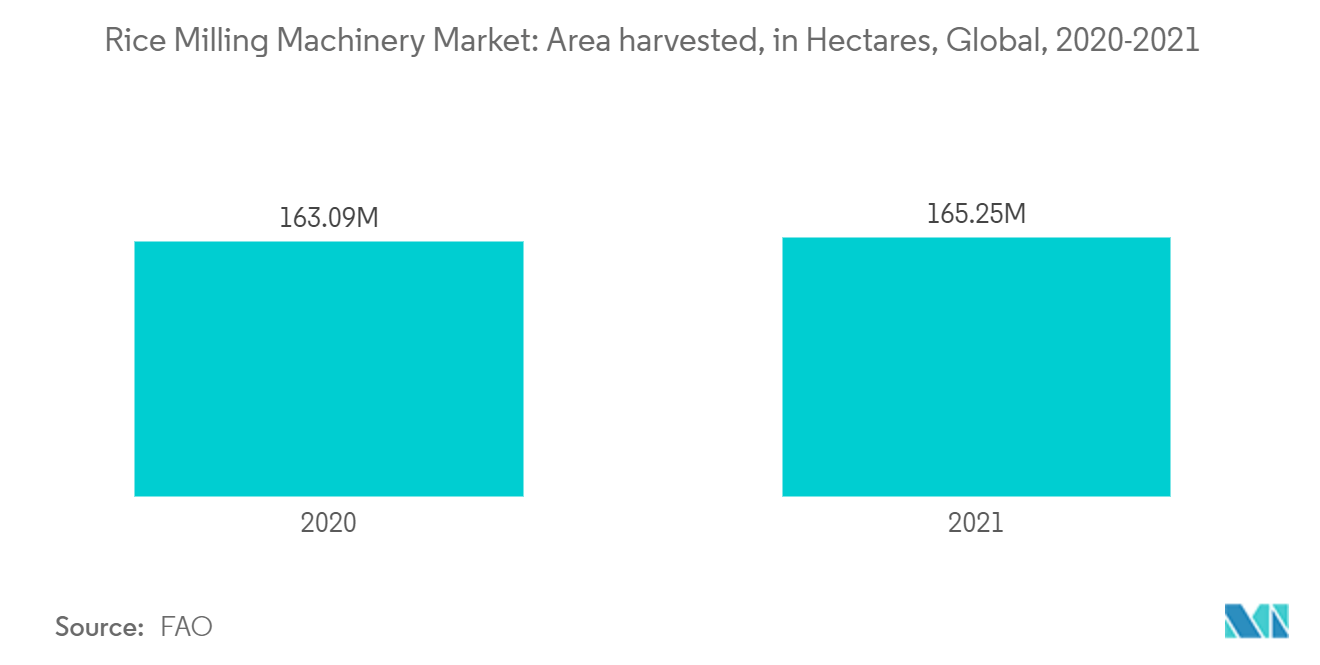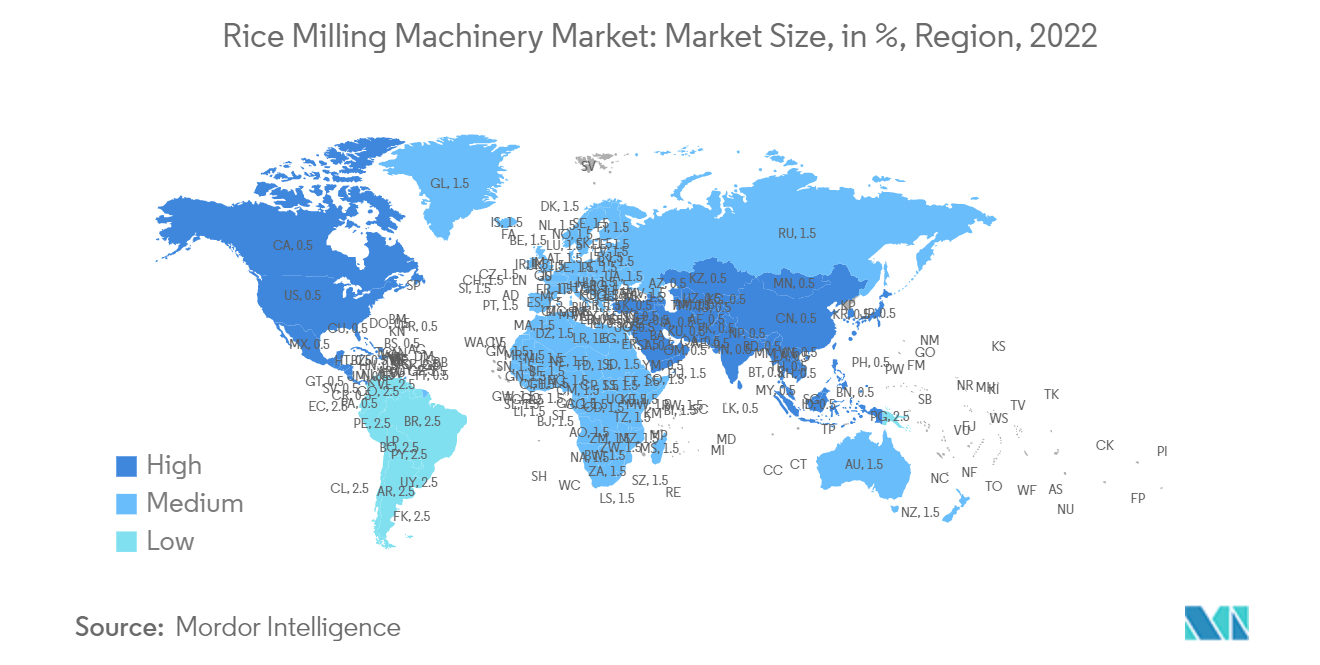Market Trends of Rice Milling Machinery Industry
Rising Area Under Rice Cultivation
- Rice is the primary staple food for more than half the world's population, with Asia, Sub-Saharan Africa, and South America as the largest consuming regions. Asia is the largest producer of rice, including countries like China and India, which are among the largest producers and consumers of rice. According to the Food and Agriculture Organization (FAO), in 2021, the total area harvested by India accounted for 46.2 million metric tons, followed by China with 29.9 million metric tons, Bangladesh with 11.7 million metric tons, Thailand with 11.2 million metric tons, and Indonesia with 10.4 million metric tons. This increase in the area harvested shows the increase in the requirement for more milling machinery to extract rice from paddy for consumption.
- According to the United States Department of Agriculture (USDA) report 2021, four regions produced almost the entire United States rice crop production: Arkansas Grand Prairie, Mississippi Delta, Gulf Coast, and Sacramento Valley of California. Each region normally specializes in a specific type of rice, referred to in the United States by the long, medium, and short grain length.
- The United States long-grain rice is typically dry and separates when cooked, while medium- and short-grain rice are typically moist and clingy. In general, long-grain production accounts for around 75 percent of United States rice production, medium-grain production for about 24 percent, and short-grain for the remainder.
- Paddy rice cultivation is limited to areas with specific climatic conditions, such as high temperatures, high humidity, and abundant rainfall. As a result, it is grown primarily in regions of Asia, such as China, India, and Southeast Asia, as well as in regions of Africa and South America. However, the rising adoption of high-yielding varieties and new cultivation techniques, such as alternate wetting and drying (AWD), has allowed for increased rice cultivation in areas that were previously unsuitable.
- The rising demand for high-quality rice and the increasing adoption of new cultivation techniques and high-yielding varieties presents a significant opportunity for players in the rice milling machinery market. These players can offer advanced machines that can improve the efficiency of the rice milling process, reduce labor costs, and increase the quality of the final product.

Asia-Pacific Dominates the Market
- Rice, wheat, and corn are the major consumed staple crops worldwide, whereas rice is a major staple crop among the three, helping more than half of the global population meet its daily calorie requirements. More than 90 percent of the world's rice is grown in Asia, principally in China, India, Indonesia, and Bangladesh, with smaller amounts grown in Japan, Pakistan, and various Southeast Asian nations.
- According to the Food and Agriculture Organization (FAO), in the year 2021, the total area harvested by India accounted for 46.2 million metric tons, followed by China with 29.9 million metric tons, Bangladesh with 11.7 million metric tons, Thailand with 11.2 million metric tons and Indonesia with 10.4 million metric tons.
- Integrated Crop Management (ICM) approaches for rice crops involve location-specific technologies combined with effective institutional support from governments, research institutions, and extension services. This approach aims to optimize the use of available resources, minimize the impact of pests and diseases, and improve the overall productivity and sustainability of rice farming. Using ICM approaches, farmers can bridge the yield gap and increase their rice production. Governments can support farmers by providing access to input and village credit supplies, as well as strengthening research and extension linkages to disseminate new knowledge and technologies.
- According to FAO, rice consumption in Asia by 2025 will increase by more than 51 percent. This increase in demand for rice due to the population increase in the region will drive the rice milling market during the forecast year.


